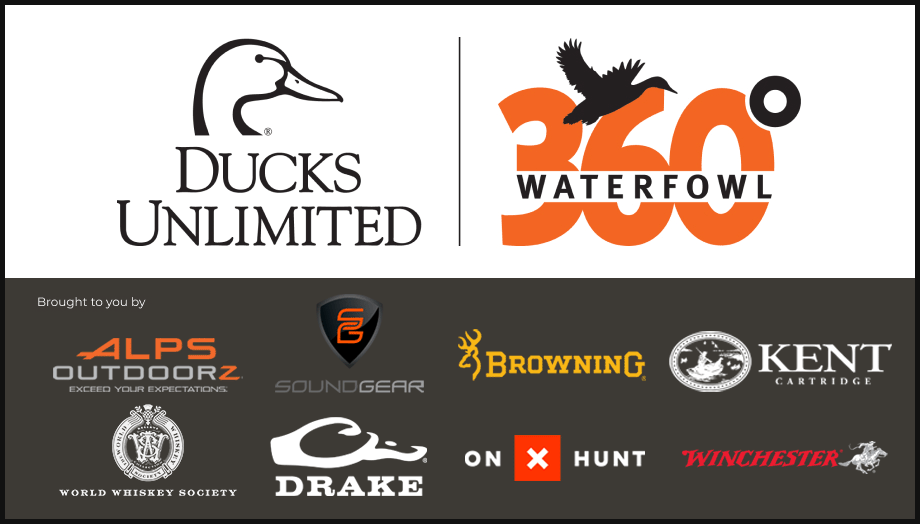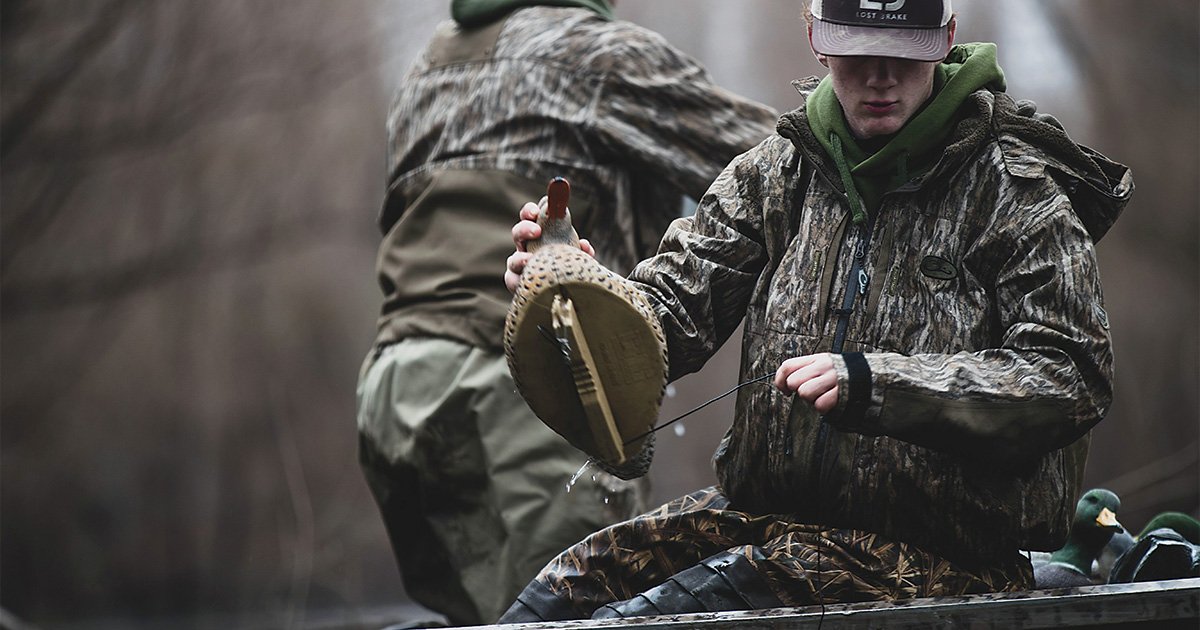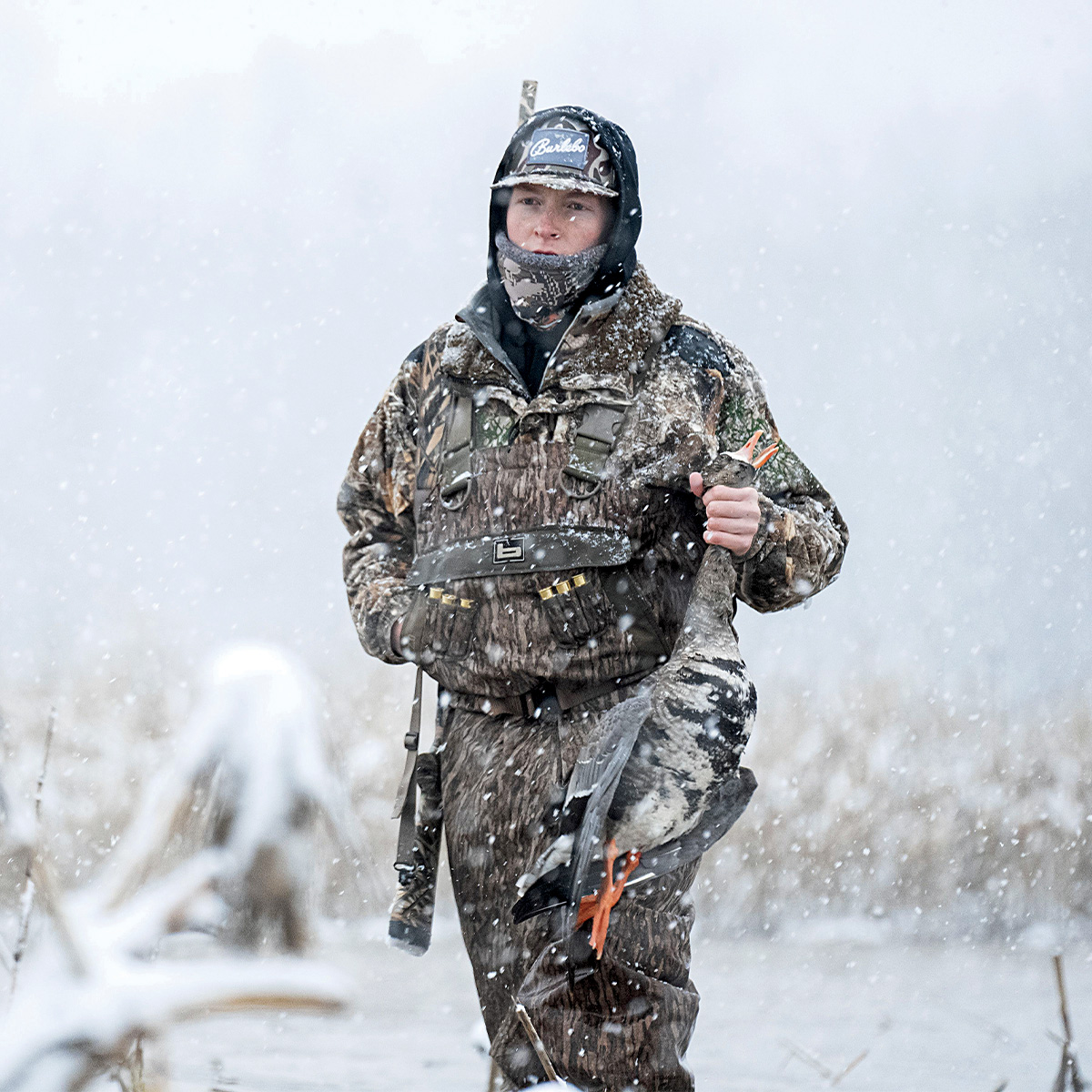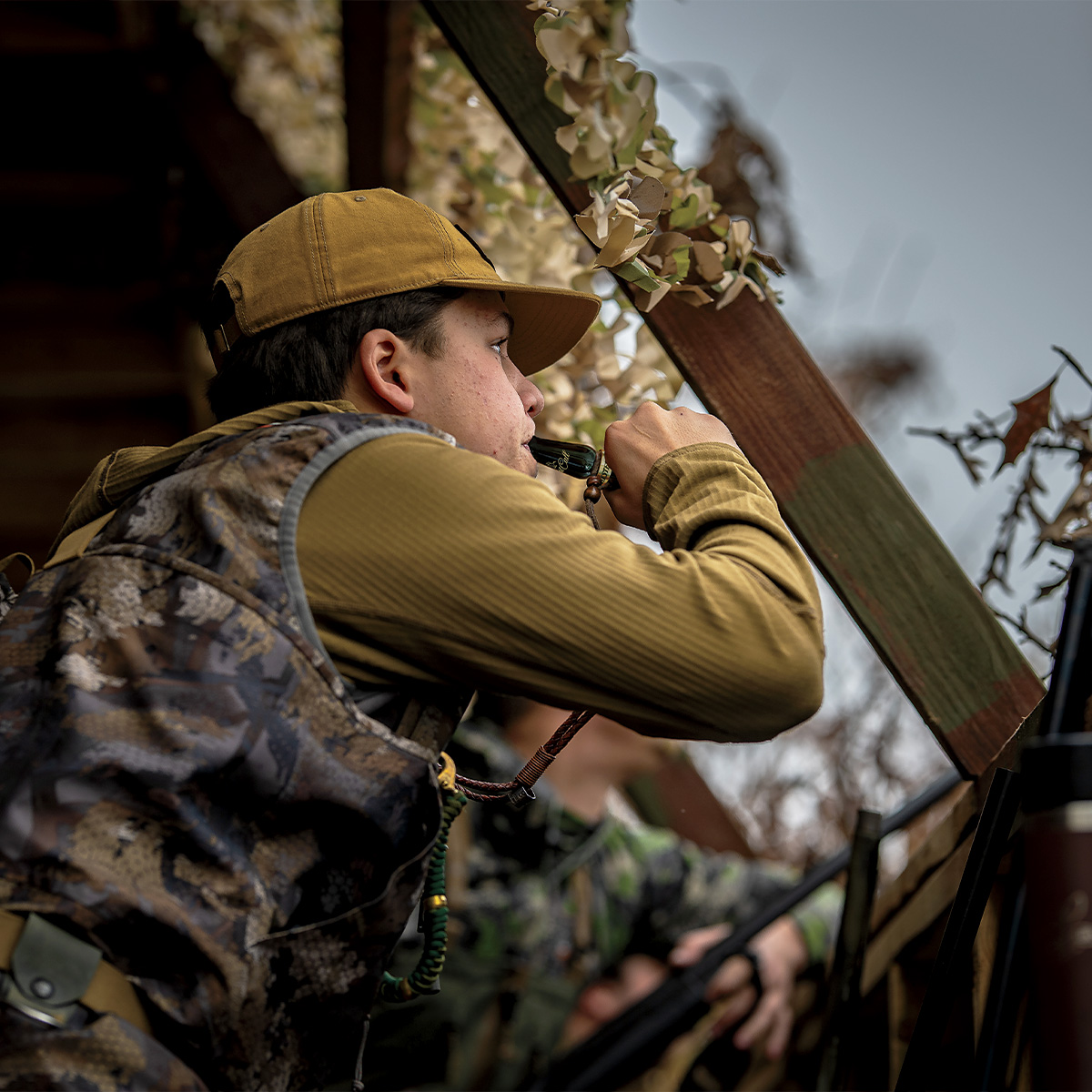The Right Gear
There’s no shortage of waterfowl equipment on the market—here’s how to choose gear that is best suited to the way you hunt
There’s no shortage of waterfowl equipment on the market—here’s how to choose gear that is best suited to the way you hunt


Shopping for waterfowl gear is kind of like shooting at a speeding flock of green-winged teal. A focused approach is going to yield better results than “spraying and praying” will. What follows is a look at three types of gear that are essential to the waterfowl hunting experience—decoys, waders, and calls—and how you can select the gear that will work best for you based on what, where, and when you hunt.
According to Ashur Tolliver with Dive Bomb Industries, hunters who target ducks over water really don’t need to look any further than a standard mallard floater. “You simply can’t go wrong with an unflocked mallard decoy,” Tolliver says. “There’s a time and a place when flocked decoys are the ticket, but plain, painted mallard decoys are budget-friendly, and they flat-out work for just about any species. It’s nice to have some teal or wood duck decoys if you’re targeting those species specifically, but you can kill a lot of ducks over a simple spread of mallards.”
Another area of focus for building a spread, Tolliver adds, is to consider contrast and visibility, especially if you tend to hunt away from the X or if you’re running traffic. “In an era of ultra-realism in decoys, a black-and-white spread still has considerable pulling power,” Tolliver explains. “This might mean throwing out a handful of drake pintail decoys, with their bright white color, or even drake shovelers, which are such an underrated decoy. That dark head and white body provide a contrast that just pops. And Canada goose floaters, with their wide backs, that black neck, and white cheek-patch, provide that same contrast. They are great to use on days with low visibility, and mallards feel really comfortable around them too.”
You don’t always need floating decoys when hunting over water, Tolliver adds. “I’ve shot a lot of ducks and geese over water without using a single floating decoy. You can line the banks with honker full-bodies, shells, or silhouettes, and with longer decoy stakes, you can extend a spread of those same kinds of decoys out into the water. Sandbars, mudflats, any place where water meets land, you can use a full-body, silhouette, or shell Canada goose decoy.”
For a hunter looking to build a dedicated spread of field decoys, Tolliver notes that each kind of decoy has its own distinct advantage. Full-bodies provide the 3D realism that is great for finishing birds; silhouettes are more affordable, easier to carry, and a good way to add numbers to your foot-print in the field; and shells are especially effective late in the season when the weather turns cold.
“Having some of each is great, but that’s not always realistic when you’re putting together a spread on your own. My advice is to partner up with your buddies and have everybody bite off a piece of the pie,” Tolliver says. “Most important, though, is to just give it a go with what you have. You don’t need the biggest, baddest decoy spread if you are well concealed and you are where the birds want to be.”

Breathable waders are a good choice to handle wide swings in conditions, because you can add layers underneath as needed.
Few pieces of waterfowl hunting gear have advanced more in recent years than waders. Improvements in fabric, construction, and fit mean that waterfowl hunters can now choose from a wide selection of quality waders.
There are four factors that a hunter should keep in mind when selecting a pair of waders, says Phil Kahnke with Banded Brands. These include the water depth where you hunt, water temperature, how much time you’ll be spending in the water, and terrain. “In terms of water depth, if you primarily hunt in shallow water and never expect to be in anything that is over knee-high, you can probably get away with a pair of hip waders or waist-high waders,” Kahnke says. “At the very least, you could use these to hunt early in the season when the temperatures are warmer.”
Chest waders are the obvious answer when hunting in deeper water, and Kahnke says that narrowing down your choice of chest waders means considering the range of water and air temperatures you’ll experience during the season. “Waterfowl hunters are out there from September, when it’s warm or downright hot, to December or January, when air temperatures can get well below freezing and water temperatures are hovering just above 32 degrees. If you tend to hunt one end of that extreme more than the other, you’ll want to grab a pair of waders that matches those conditions,” Kahnke explains. “The time you spend in the water under those conditions also makes a difference. Standing in deeper water for two or three hours when the conditions are cold can really zap the heat out of you.”
Breathable waders are a good choice to handle wide swings in conditions, Kahnke says, because you can add layers underneath as needed. “A base layer of merino wool under your waders will be enough for an early-season hunt. Later in the year, you can add additional layers, like a good pair of wader pants, to handle those days when you are hunting in the cold,” he says.
Insulated boots and hand-warmer pockets are nice features in waders that are going to be worn late in the season, and D-rings help keep your hands free while picking up decoys. And don’t forget to consider how far you will be walking in your waders and the type of terrain you’ll need to cover. “For hunters making long treks into public hunting areas or otherwise needing to cover some distance in waders, you’ll want a pair designed for mobility,” Kahnke notes. “And if you are going to be walking over some rough ground or heavy cover, you’ll want to consider the soles of the boots and what they offer for traction. As good as waders have become, it’s still tough to stay warm and dry when you slip and fall into the water.”

A young waterfowler’s first duck and goose calls should help reinforce proper calling mechanics. For a duck call, this means beginning with a standard J-frame single-reed call.
Single reed, double reed, short reed, cutdown, flute, whistle, wood, acrylic, or polycarbonate, there really seems to be no limit to the choices waterfowl hunters have when it comes to picking out a new duck or goose call. So how do you narrow down the field and find the one that is right for you?
Shawn Stahl with Rich-N-Tone Calls believes that a young waterfowler’s first duck and goose calls should help reinforce proper calling mechanics. “For a duck call, this means beginning with a standard J-frame single-reed call,” Stahl says. “I don’t recommend that a young caller begin on a double reed. The J-frame is going to give the caller a chance to experience all of the different sounds that a call can make. Once you have a good foundation, then you can branch off into different styles of calls.”
For a goose call, Stahl recommends beginning with a longer call because it will provide “a little more forgiveness” when working to develop proper honk and cluck sounds.
“Probably one of the more important steps when picking out any call is to test-drive a lot of models,” Stahl says. “Go to a waterfowl expo or other type of event where there are a lot of vendors and blow some air through a ton of calls until you find the one that fits you. And don’t be afraid to buy that $50 polycarbonate duck or goose call rather than a custom call that costs $150 or more. A lot of ducks and geese have been shot after being fooled by a polycarb.”
Stahl adds that it is very important to have a call that is tuned correctly. “If you don’t know how to do this, ask someone who does. Again, it’s a good reason to attend an event where reputable call makers are there selling calls. Make sure the call you buy is tuned correctly before you head back home.”
From there, Stahl recommends making use of sound files, videos, and other tutorials that are available online to help guide your practice during the off-season so you’ll be able to get the most out of your new purchase.
Ducks Unlimited uses cookies to enhance your browsing experience, optimize site functionality, analyze traffic, and deliver personalized advertising through third parties. By continuing to use this site, you agree to our use of cookies. View Privacy Policy